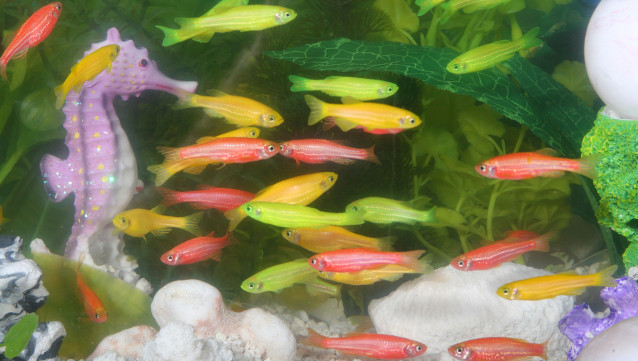
One of the more popular exhibits at The Tech Museum of Innovation in San Jose is the wetlab. This is where museum visitors get to add the green fluorescent protein (GFP) gene from jellyfish to bacteria to get the bacteria to glow green. The 20,000 or so people who do this each year get to learn about how genetically engineering bacteria can help to create important medicines like EPO, insulin and growth hormone.
The exhibit is getting a little long in the tooth so I was looking for ways to give it a bit of a refresh. One idea we’re thinking about is adding some new colors to the mix. We might give visitors the option of using a gene from coral that makes the bacteria glow red or a mutant version of GFP that glows blue in addition to the current green one. We may even add a station that lets visitors paint living pictures using these different colored bacteria.
Another simple but fun refresh I wanted to add was an aquarium full of GloFish. These are fish that have had various fluorescent genes inserted into their DNA so they glow incredibly brightly. I thought this was an easy and visually fun way to get into a discussion about how GFP has become such a powerful tool for scientists. I was only half right.
Getting GloFish into an exhibit here in California is nontrivial because they are illegal. That’s right: they are legal in the other 49 states but illegal here. I need to get a special permit from the California Department of Fish and Wildlife to have GloFish merrily swimming at The Tech. And Sheldon (from The Big Bang Theory) would have been breaking California law by having them in his Pasadena apartment in the episode, “The Luminous Fish Effect.”

Now they aren't illegal because they are dangerous. They won’t spread disease, take over native fishes or swallow swimmers whole. They are small, tropical fish that won’t survive long in California’s chilly waters. And the few that do manage to survive are twice as likely to be eaten by predatory fish compared to their non-glowing brethren. This means that because of natural selection they would quickly be wiped out.